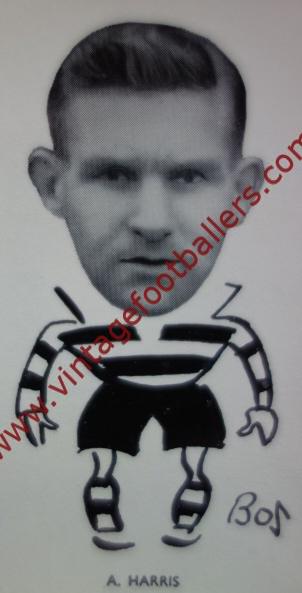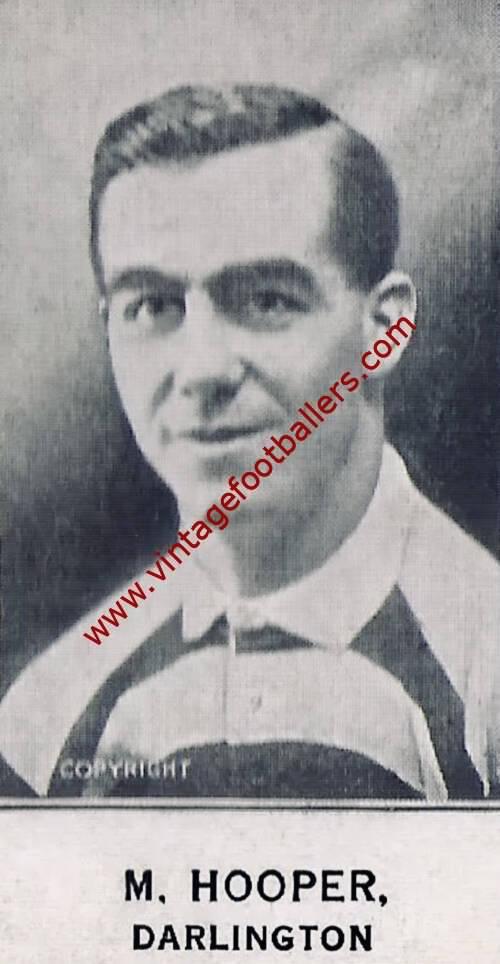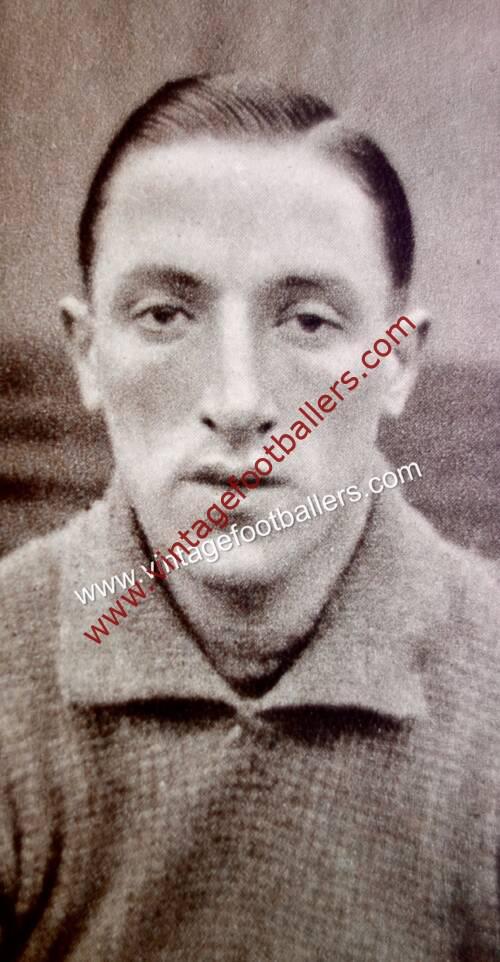Please choose your photo size from the drop down menu below.
If you wish your photo to be framed please select Yes.
Note: 16″x 20″not available in a frame.
Images can also be added to accessories. To order please follow these links
£8.95 – £49.95
Please choose your photo size from the drop down menu below.
If you wish your photo to be framed please select Yes.
Note: 16″x 20″not available in a frame.
Images can also be added to accessories. To order please follow these links
Darlington, County Durham born inside right Dick Healey captained both football and cricket teams at Darlington Grammar School, and began his football career with Darlington while still a schoolboy. Healey was playing for Bishop Auckland as they won the Northern League title in the 1908-09 season. His play attracted attention. In February 1910, he was selected for an amateur international trial, and in March he appeared for First Division club Sunderland’s North Eastern League reserve team, creating two goals and scoring the last in a 6-0 defeat of Darlington. He made his Football League debut for Sunderland in April 1910, in a 2-0 defeat at Manchester United. The Sunderland Daily Echo commented that he and fellow inside forward George Holley “perhaps did not make the most of their opportunities, for when in possession in the shooting zone they failed to shoot with sufficient power.”
Healey kept his place for the last home match of the season, against Bradford City, and “proved a keen worker”, according to the Echo correspondent, and scored the first two goals in a 3-0 win. The first resulted from Bradford’s goalkeeper Harry Maskrey losing the ball when attempting a clearance; he then “seized Healey, but the latter struggled free and jumping over Maskrey he put the ball in the net”. The second was a header from a corner. He missed Sunderland’s last match of the season to play for Bishop Auckland in a 2-1 win against Scarborough that secured them the Northern League title. Sunderland retained Healey’s Football League registration for each season up to 1913-14, but he played only once more for the first team, at Aston Villa in October 1911, meantime also playing for Bishop Auckland, Stockton and Darlington.
Healey began the 1910-11 season with Stockton, but soon returned to Bishop Auckland, whom he helped reach the 1911 FA Amateur Cup Final. He scored in the semi-final, against Ilford, but Bishops lost to Bromley in the Final, despite their opponents having a man sent off for striking another player. He moved on to Darlington in February 1912, and the following season was their top scorer with 41 League goals as the club won the North Eastern League Championship. Healey was included at inside right in a forward line “about as strong as it could be made” for the Amateur XI that faced a Professional XI in the 1913 FA Charity Shield. Although the amateurs lost 7-2, the Daily Mirror’s reporter picked him out as the “most consistent forward in the line”.
He was selected for the North-Eastern League eleven to face the Central League in February 1914. In March, Scottish club St Mirren were without the services of the injured George Elmore for their Scottish Cup quarter-final, and had hoped to use Healey in his place; he had previously played in the area with the Northern Nomads travelling team.Sunderland made no objection, but it was reported first that business prevented Healey obliging, and later that he had an injured knee.
During the early stages of his career Healey also received England amateur international honours. Healey played at centre forward for The North in an amateur trial match in February 1910; his side lost 3-2, and he was not selected for the upcoming fixtures. His first international selection came in the form of a last-minute call-up when Frank Monk and Vivian Woodward dropped out of the England Amateur XI’s visit to mainland Europe in March 1911. Healey made his debut against the French national team at the Stade de Paris, opening the scoring as his team won 3-0, and scored again a couple of days later against Switzerland in a 4-1 win. His next involvement at international level was nearly a year later, against the Wales Amateur XI at the ground of his former club, Bishop Auckland, in February 1912. He was involved in the buildup to the second goal, scored by Sydney Sanders, and scored the third himself as England won 3-0. He was selected as a reserve for matches at home to the Netherlands and away to Belgium in March and April, but did not make his next, and what turned out to be final, appearance until November against Belgium, in which he scored the second of England’s four goals. He had to withdraw from the selection to face Wales in February 1913, and was an unused reserve for the visits to Germany and Belgium in March and to Wales the following February.
He thenc turned professional with First Division club Middlesbrough. He was described as “[possessing] fine physique, and is a remarkably clever dribbler and good shot”. He had already reached the 20-goal mark for Darlington and it was expected that “professional training will increase his pace”. He made his ‘Boro debut on 4th April 1914 at home to Preston North End, scored Middlesbrough’s third goal 15 minutes into the second half as they won 4-1, and “proved himself well up to the first grade of Association Football”. He was retained for the 1914-15 season, the last before League football was discontinued for the duration of the First World War, but played mainly for the reserve team in the North Eastern League, in which capacity he was chosen for the Rest of the League team for the annual fixture against the League champions. He made three more Football League appearances, and scored once more, a second half header against Bradford Park Avenue in November 1914 in what was Middlesbrough’s first home defeat of the season.
During the First World War, Healey served as a gunner with the 151st (Darlington) Heavy Battery, Royal Garrison Artillery. After Darlington F.C. folded during the War, a new club, Darlington Forge Albion, was formed to represent the town in the Northern Victory League. Healey resumed his football career with that club, which was renamed Darlington for the first post-war season of the North Eastern League. His goals contributed to their second place finish, he was the League’s top scorer halfway through the season, and his performances earned him selection for the representative match against the Central League.
His goals also helped Darlington reach the second round proper (last 32) of the 1919-20 FA Cup. Healey scored twice against Bishop Auckland in the fifth qualifying round, and repeated the feat in the sixth, as well as creating two for Aaron Travis, as Darlington beat Southern League club Norwich City 5-0. In the first round proper, Darlington faced Sheffield Wednesday of the First Division. A damaged shoulder meant Healey was unfit for the scheduled date, but a waterlogged Feethams pitch gave him an extra few days to recover. The match ended goalless; Healey was unusually indecisive in front of goal, and was standing in an offside position when Travis did put the ball in the net. Although reported doubtful for the replay, he did appear, pressuring goalkeeper Arnold Birch into conceding a corner from which Darlington took the lead, the goal variously attributed to George Stevens or to Healey himself. He missed the second round tie at Birmingham because his wife was ill, which Darlington lost 4-0.
Under Healey’s captaincy, Darlington won the North Eastern League title in 1920-21. In the FA Cup, they hosted Second Division club Blackpool in the first round. Healey scored the opener, was involved in Darlington’s late equaliser, and missed another chance by heading wide when well placed; they lost the replay.
Darlington formed part of the new Northern Section of the Third Division in 1921-22. Healey was no longer a first choice in the forward line, but appeared not infrequently, particularly when the ground was heavy. He made his first appearance on 24th December and played in nine of the next twelve fixtures. Replacing the injured Arthur Wolstenholme for the FA Cup match against Manchester City, he opened the scoring with a header, but City won 3-1. He kept his place for the next match, and even after Wolstenholme’s return to fitness continued in the team, with a winning goal against Rochdale, four of Darlington’s six to beat Hartlepools United in the Durham Senior Cup, and profiting from a defensive error to score the only goal of the League visit to Tranmere Rovers. He then played 4 fixtures on the run in as Darlington finished second in the Third Division (North) narrowly missing out on promotion.
Healey was retained for the 1922-23 season, and he scored against Accrington Stanley in September, but he played mainly in the reserves. In a match against Hartlepools’ reserves in November, he was the butt of the crowd’s mockery because he had, as the Northern Daily Mail put it, “now lost some of his former vigour”. He finished his Football League career with 6 goals from 22 matches during Darlington’s first two League seasons.
Healey also had a notable career as a Minor Counties and club cricketer. Healey’s first involvement with Darlington Cricket Club was as a 9 year old. He made his debut for the second eleven in 1906, finished at the top of both batting and bowling averages the following season, and played for the first eleven in 1908. In 1910, he played in a Durham county trial match and for Durham Colts against a full county side. A sound performance with the bat in the corresponding fixture in 1911 earned him selection for Durham. He played in five Minor Counties matches that season, two in 1913, and his eighth and last in 1920. In 1913, Healey was appointed captain of Darlington CC, a position he held until the end of the 1930 season, when he resigned after leading the club to a seventh North Yorkshire and South Durham League title under his captaincy. In 25 seasons as a first eleven player, he scored 6,586 runs at an average of 28.76, a total that included four centuries and forty half centuries; he also took 66 wickets and “over 80” catches. In 1951, after he retired from teaching, Healey became President of the club, an office he retained until his death in 1974.
| Weight | N/A |
|---|



